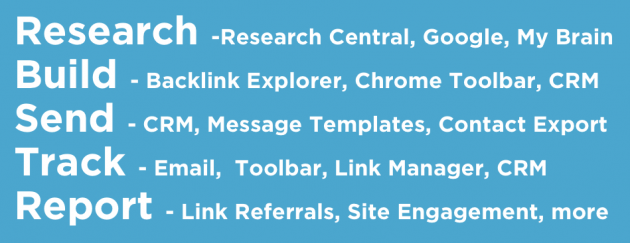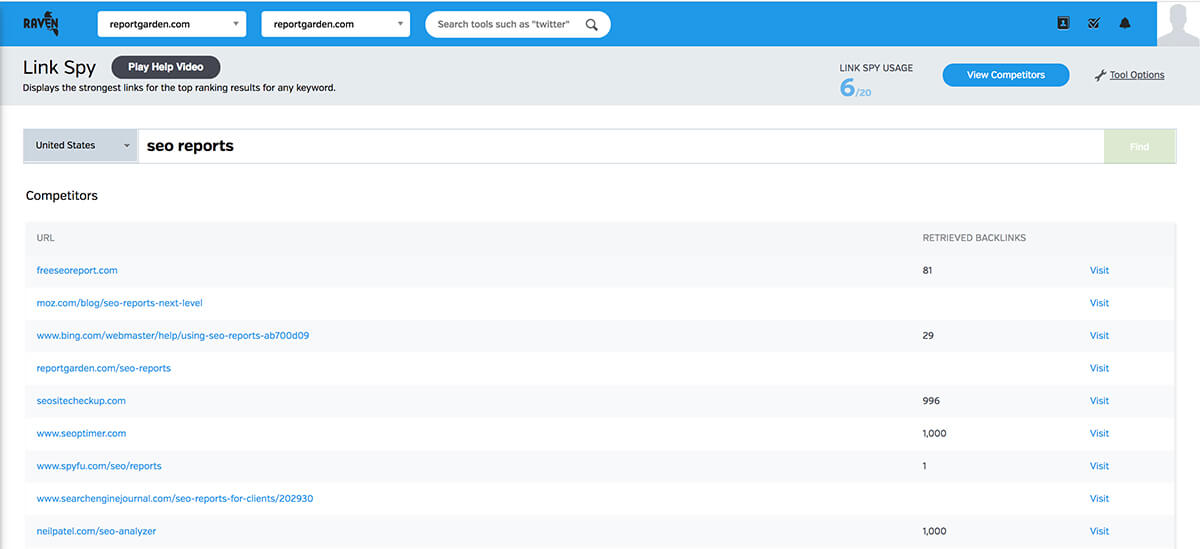As a roller derby referee, I’m serious about my skates. So when I’m at Square Cat Skates, I’m there as a customer.
But what if I were there as an SEO, running a link building campaign with the California roller skate and roller derby gear shop as my client?
That’s the scenario I walked through step-by-step in my recent Raven University presentation on using Raven’s many SEO, link research and link management tools.
You can watch the full recording here to walk through basics on executing an outreach-based link building campaign using Raven Tools.
In this post, let’s take a closer look at the five fundamental elements to this kind of campaign.

Step 1: Research
Research isn’t just for keywords (although that’s pretty important). For better outreach, let’s extend our research by studying our ideal audience, industry influencers and the places where these groups consume media. Whose interests best align with our client? In our case, it makes sense to target roller derby skaters and their official leagues.
Then, we’ll do even more research to find the value proposition that will return enough benefit to make our approach worthwhile. What can our client offer to its potential audience that’s beneficial for them and also for Square Cat Skates? It might be coupons, discounts, sponsorship or something similar.
Step 2: Craft
Now it’s time to craft our outreach message. We’ll focus on building our message in such a way that we can easily duplicate it for multiple derby leagues, but also make sure we have the option to quickly customize it for each league. Everyone hates being just another target, so we’ll want to tweak each message or it will go right in the spam folder.
(Building up our list of potential targets is an ongoing process, so it should be happening throughout all these steps, for every campaign.)
Step 3: Send
Next up is sending out our messages. Lots of email marketing providers allow you to import lists and offer useful metrics, but smaller and one-off outreach campaigns can be just as effective with a simple Gmail account.
Step 4: Track
Once we’ve sent our message out to our audience, we’ll track not only the basic metrics like open rate and resulting click traffic but also who responded and how.
Are they on board, on the fence or uninterested? If they’re on board, follow up until that link is in place! If someone wasn’t interested in this particular message, might they be interested in something else related to Square Cat Skates’ business?
I use Raven’s CRM tags and status fields to keep all this data organized.
Step 5: Report
The job’s not quite done yet! We’ll tie it all together with reporting. How much traffic actually came from those link referrals? How many conversions were gained from the links that were generated? Can we show an overview of all available organic traffic before our campaign and after? Can we show what new organic keywords started receiving traffic after our campaign?
Reporting all these elements gives our client an easy-to-understand overview of what we’ve done for their business and how it affected their bottom line.
More resources
Want more link building resources? Our link building basics series is filled with tactics, tools and definitions to quickly get you started building links.
Link Building Basics: Introduction
Link Building Basics Part 1: Research
Link Building Basics Part 2: Outreach
Link Building Basics Part 3: Follow-up

Link Spy helps you find top-quality links based on those websites that are already ranking for your focus keywords.



